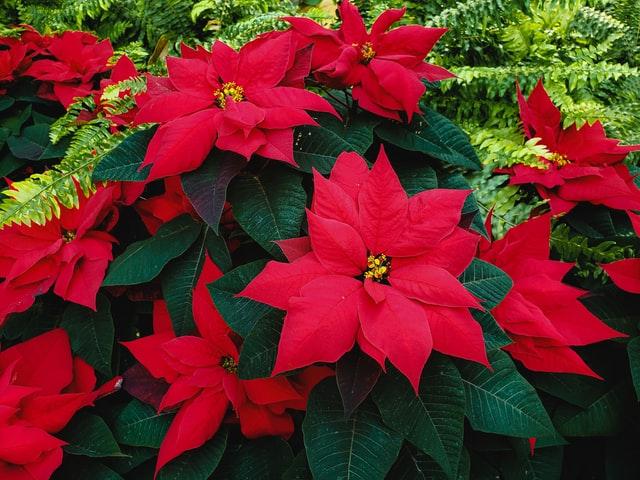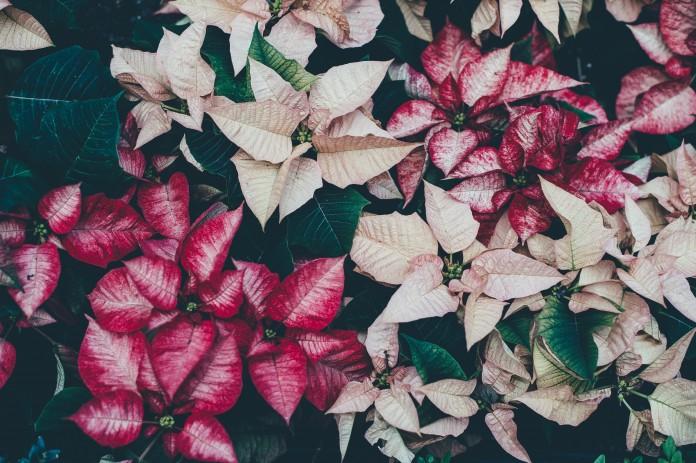by Cathy Thomas – Garfield County Master Gardeners
“Tis the season to be jolly.” And what better color says jolly holiday than red? When we think of the holiday season most think of evergreens, trees, wreaths, garlands, and decorative boughs of pines lending their scent to the air. Along with evergreens, though many decorate with red – bows, blankets, stockings, Santas, and elves – and of course, the traditional poinsettia.
Poinsettias are originally indigenous to tropical Mexico and Central America as outdoor plants. First described to Europeans in 1834, they were introduced to the United States by Joel Poinsett, the first US ambassador to Mexico in the 1820s. Before Poinsett, the plant was known as the Mexican flame flower or painted leaf.

Dark green dentate leaves are the primary plant, and what many consider the flower are leaves, as well. The colored bracts, normally bright red, with newer cultivars being bred in orange, pale green, cream, pink, white or marbled – are often mistaken for flower petals because of their grouping, but are leaves. The change of color of the bracts happens through a process called photoperiodism. Meaning they require darkness of at least 14 hours at a time for 6-8 weeks in a row to change color. The plants also require abundant light during the day for the brightest color. The flowers of the poinsettia are small yellow cyathia found in the center of each leaf bunch.
Good news about poinsettias, though. They are not deadly poisonous. Erroneously it was reported that a child died after consuming a poinsettia leaf. This myth was repeated for many years until a study showed this to be untrue. Contact with any part of the poinsettia by children or pets often has no effect, though if ingested may cause nausea or diarrhea. For some who are allergic to rubber latex, contact with the sap or latex of the plant may cause a skin rash, similar to a latex glove allergy.

To care for your poinsettia, remember to keep it indoors at temperatures between 60 and 70 degrees in light, either direct sunlight or artificial light for six to eight hours per day. As many commercial growers use non-soil mixes of sphagnum peat, pine bark, vermiculite, or similar ingredients, it is sometimes difficult to decide if the plant needs water. Lift the pot to determine its weight. If the plant is heavy, there is usually plenty of moisture in the pot; if it is lightweight and the growing medium is dry, a thorough watering should be given. Also, if the plant comes wrapped in foil, punch holes in the bottom to allow excess water to escape. Be sure to put it on a saucer or plat so that the drainage water doesn’t damage where your plant is sitting. If leaves slightly wilt, your plant needs water. If the leaves turn yellow and wilt, the plant has been overwatered. When a poinsettia is properly watered it should remain attractive for about eight weeks. If you wish to re-flower your poinsettia for next year, check out the OSU Cooperative Extension Fact Sheet HLA-6413 for instructions on how to care for your plant at https://extension.okstate.edu/fact-sheets/print-publications/hla/poinsettia-care-hla-6413.pdf.
Whether you want to reflower your poinsettia or purchase a new one, enjoy poinsettia’s flaming beauty. This living symbol of a joyous season is a colorful part of the American holiday tradition.






